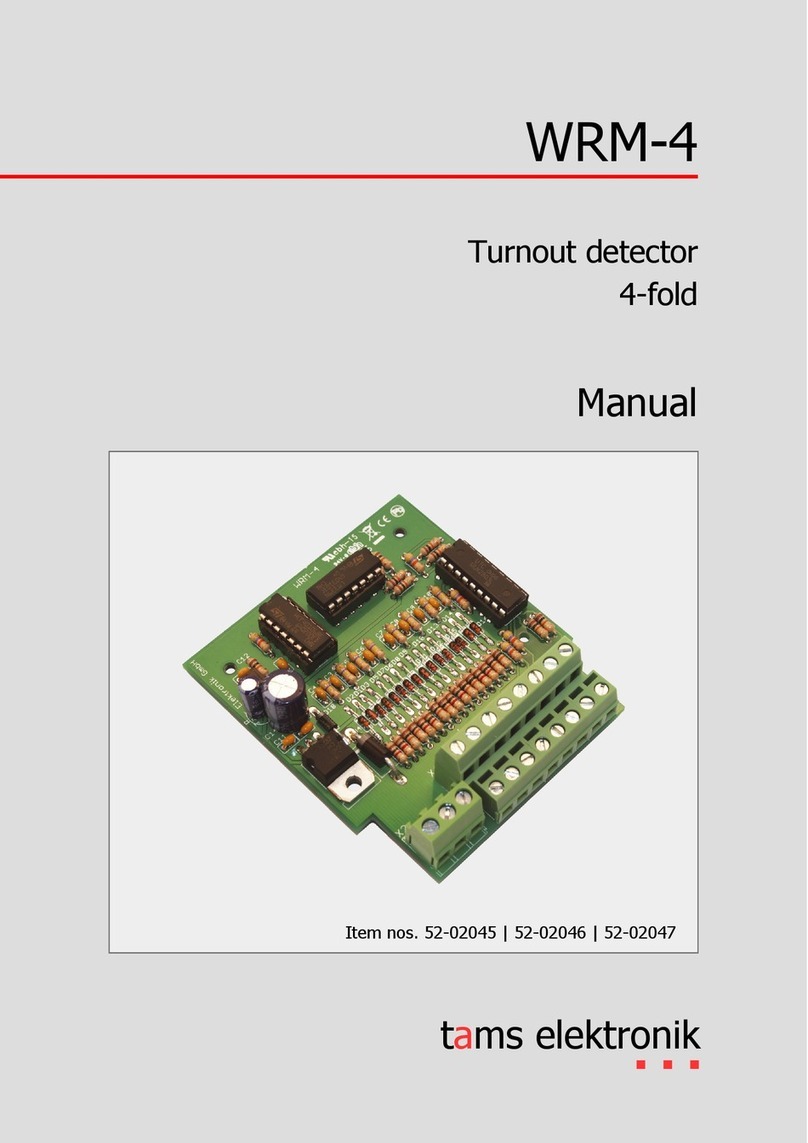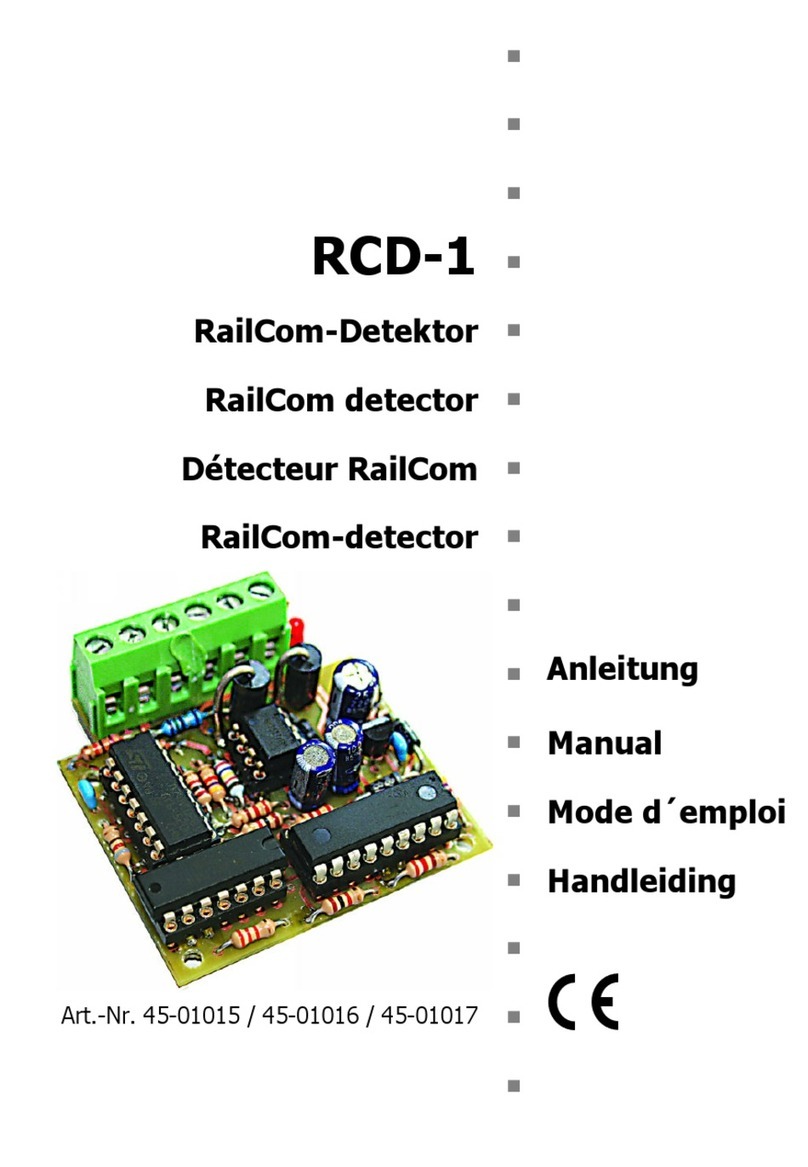En lish RCD-2
Checking the package contents
Please make sure that your packa e contains:
one kit, containin the components listed in the parts list and one
PCB or
one ready-built module or
one ready-built module in a housin (complete unit),
one jumper for pro rammin the address,
3 distortion resistors (1 piece 120 W, 2 pieces 4,7 kW),
a CD (containin the manual and further information).
Required materials
For assemblin the kit you need:
an electronic solderin iron (max. 30 Watt) or a re ulated solderin
iron with a fine tip and a solderin iron stand,
a tip-cleanin spon e,
a heat-resistant mat,
a small side cutter and wire stripper,
as necessary a pair of tweezers and lon nose pliers,
electronic tin solder (0,5 mm. diameter).
In order to connect the module you need wire. Recommended
diameters:
data bus: > 0,1 mm². It is recommended to use twin wire (e. . LiYz,
2x0,19 mm², red-brown, item no. 73-30037);
connections to the rails and the booster: > 0,25 mm²;
connections to the inte rated track occupancy indicator: > 0,1 mm²;
connection of downstream circuits to the switchin outputs:
> 0,1 mm²
connections to the detector´s power supply: > 0,25 mm².
Pa e 4





























